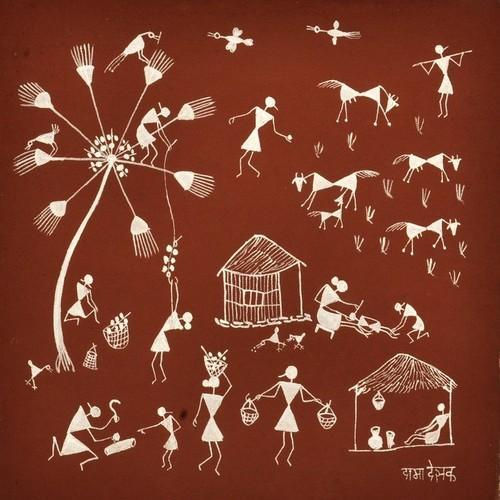How Do Rangoli Patterns Tell Stories? Art from Indian Doorsteps
- CAMI Info
- May 30
- 2 min read
Every morning, across villages, towns, and cities of India, doorsteps come alive with a quiet act of creativity — the making of Rangoli. From delicate dots to sprawling, colorful designs, Rangoli is much more than just decoration; it is a living, breathing tradition of storytelling.

The Language of Patterns and Colors
Rangoli patterns are often seen during festivals like Diwali, Pongal, Onam, and Sankranti, but in many homes, they are created daily. Each curve, line, and motif tells a story — stories of prosperity, welcome, and devotion. In many regions, the designs are passed down through generations, with grandmothers teaching granddaughters the secrets of sacred geometry, the symbolism of flowers, and the meanings behind each shape.
For example, a lotus in a Rangoli design often represents purity and divine beauty. Peacocks symbolize grace and happiness. Intertwined geometric patterns may reflect the universe’s endless cycle of life. Through these symbols, families express their hopes, values, and prayers to the gods and to the community.
Rangoli as a Celebration of Life
Rangoli is not confined to one style. Across India, each state has its own version — Kolam in Tamil Nadu, Mandana in Rajasthan, Alpana in Bengal, and Chowkpurana in Uttar Pradesh. Despite the differences in technique and style, the essence remains the same: celebrating life, nature, and spirituality through art.
During special occasions, Rangolis become more elaborate, sometimes telling mythological stories or capturing scenes from everyday village life. A series of tiny footmarks may depict the arrival of the goddess Lakshmi. A circle of birds around a grain of rice may tell the story of a bountiful harvest.
Art from the Heart and Hand
What makes Rangoli even more special is its impermanence. Made from rice flour, flower petals, colored sand, or even pulses, Rangolis are exposed to wind, footsteps, and rain. They are created with love, knowing they may disappear within hours — a beautiful reminder of life's fleeting moments and the importance of creating beauty anyway.
Each Rangoli is an unspoken message: Welcome, Prosperity, Gratitude — stitched into everyday life, connecting art, tradition, and storytelling.
At Children’s Art Museum of India, we believe every child has a story to tell — just like every Rangoli does!
Encourage your little artist to share their creations with us and be part of a growing community that celebrates the magic of everyday art.
Submit your colorful creation to us and share your artistic journey!
#HistoryOfColors #ArtPigments #CreativeKids #PaintingWithColors #AncientArt #ColorfulCreations #ArtHistory #ChildrensArtMuseumOfIndia




Comments